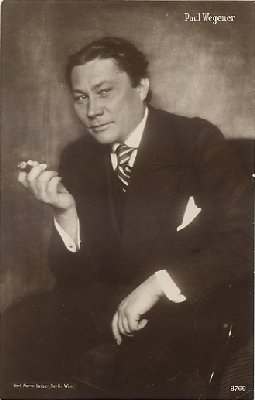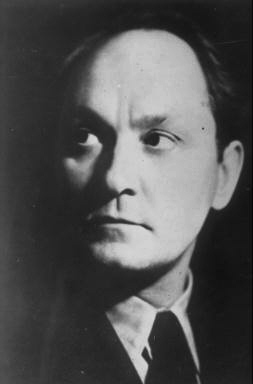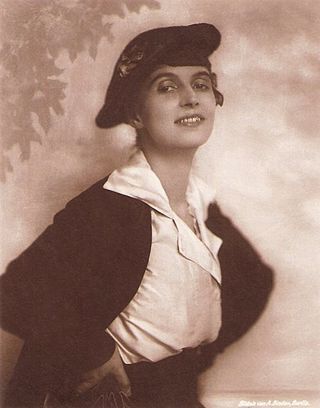The following is an overview of 1926 in film, including significant events, a list of films released, and notable births and deaths.
This is an overview of 1924 in film, including significant events, a list of films released and notable births and deaths.
The year 1920 in film involved some significant events.

Hans Walter Conrad Veidt was a German actor. He attracted early attention for his roles in the films Different from the Others (1919), The Cabinet of Dr. Caligari (1920), and The Man Who Laughs (1928). After a successful career in German silent films, where he was one of the best-paid stars of UFA, Veidt and his new Jewish wife Ilona Prager left Germany in 1933 after the Nazis came to power. The couple settled in Britain, where he took citizenship in 1939. He appeared in many British films, including The Thief of Bagdad (1940), before emigrating to the United States around 1941, which led to his being cast in what may be his best remembered role as Major Strasser in Casablanca (1942). This was Veidt's last film role to be released during his lifetime.

Paul Wegener was a German actor, writer, and film director known for his pioneering role in German expressionist cinema.
Der Golem is a partially lost 1915 German silent horror film written and directed by Paul Wegener and Henrik Galeen. It was inspired by a Jewish folktale, the most prevalent version of the story involving 16th century Rabbi Judah Loew ben Bezalel who created the Golem to protect his people from antisemites. Wegener claimed the film was based on Gustav Meyrink's 1915 novel The Golem, but, as the movie has little to do with existing Jewish traditions, Troy Howarth states "it is more likely that simply drew upon European folklore".

Waxworks is a 1924 German silent anthology film directed by Paul Leni. The film encompasses several genres, including a fantasy adventure, a historical film, and a horror film through its various episodes. Its stories are linked by a plot thread about a writer who accepts a job from a waxworks proprietor to write a series of stories about the exhibits of Caliph of Baghdad, Ivan the Terrible and Jack the Ripper in order to boost business.

Werner Johannes Krauss was a German stage and film actor. Krauss dominated the German stage of the early 20th century. However, his participation in the antisemitic propaganda film Jud Süß and his collaboration with the Nazis made him a controversial figure.

The Student of Prague is a 1913 German silent horror film. It is loosely based on "William Wilson", a short story by Edgar Allan Poe, the poem The December Night by Alfred de Musset, and Faust. The film was remade in 1926, under the same title The Student of Prague. Other remakes were produced in 1935 and 2004. The film stars Paul Wegener in his film debut. It is generally deemed to be the first German art film.

John Gottowt was an Austrian actor, stage director and film director for theatres and silent movies.

Lothar Müthel was a German stage and film actor and director.
Eroica is a 1949 Austrian film depicting composer Ludwig van Beethoven's life and work. The film is directed by Walter Kolm-Veltée, produced by Guido Bagier with Walter Kolm-Veltée and written by Walter Kolm-Veltée with Franz Tassié. It was entered into the 1949 Cannes Film Festival.

Irmgard Hermann was a German actress. She worked in film, television, and the stage, appearing in over 160 film and television productions. She was discovered, without formal training, by Rainer Werner Fassbinder who cast her in many of his films. She was awarded the Deutscher Filmpreis for playing Irmgard Epp in Fassbinder's The Merchant of Four Seasons, and again for appearing as Else Gebel, a woman in prison with Sophie Scholl, in Percy Adlon's Fünf letzte Tage.

Erna Morena was a German film actress, film producer, and screenwriter of the silent era. She appeared in 104 films between 1913 and 1951.

Lady Hamilton is a 1921 German silent historical film directed by Richard Oswald and starring Liane Haid, Conrad Veidt and Werner Krauss. The film depicts the love affair between the British Admiral Lord Nelson and Lady Emma Hamilton. It was based on two novels by Heinrich Vollrath Schumacher. A copy of the film exists in a Russian film archive.
Henrik Galeen was an Austrian-born actor, screenwriter and film director considered an influential figure in the development of German Expressionist cinema during the silent era.

Dagny Servaes was a German-Austrian stage and film actress. In the theatre she appeared in the productions of Max Reinhardt and Berthold Brecht. Servaes appeared in around sixty films during her career, initially in lead and later in supporting roles. One of her earliest screen performances was in the 1917 propaganda film Dr. Hart's Diary. She also voiced the character of the evil queen in a German language dub of Disney's Snow White and the Seven Dwarfs made for the Austrian market in 1938.
Figures of the Night (German:Nachtgestalten) is a 1920 German silent horror film written, directed and produced by Richard Oswald and starring Paul Wegener, Conrad Veidt, Reinhold Schünzel and Erna Morena. It is based on the novel Eleagabal Kuperus by Karl Hans Strobl. Strobl was the editor of a German horror fiction magazine called Der Orchideengarten which was said to have been influenced by the works of Edgar Allan Poe. Strobl was an anti-Semitic and later willingly joined the Nazi Party, which may explain why he has become an obscure literary figure today.
The Lost Shadow is a 1921 German silent film directed by Rochus Gliese and starring Paul Wegener, Wilhelm Bendow and Adele Sandrock. The cinematographer was Karl Freund. The film's sets were designed by the art director Kurt Richter. It was shot at the Tempelhof Studios in Berlin. For some reason, the film was only released in the US in 1928. It is today considered a lost film.











